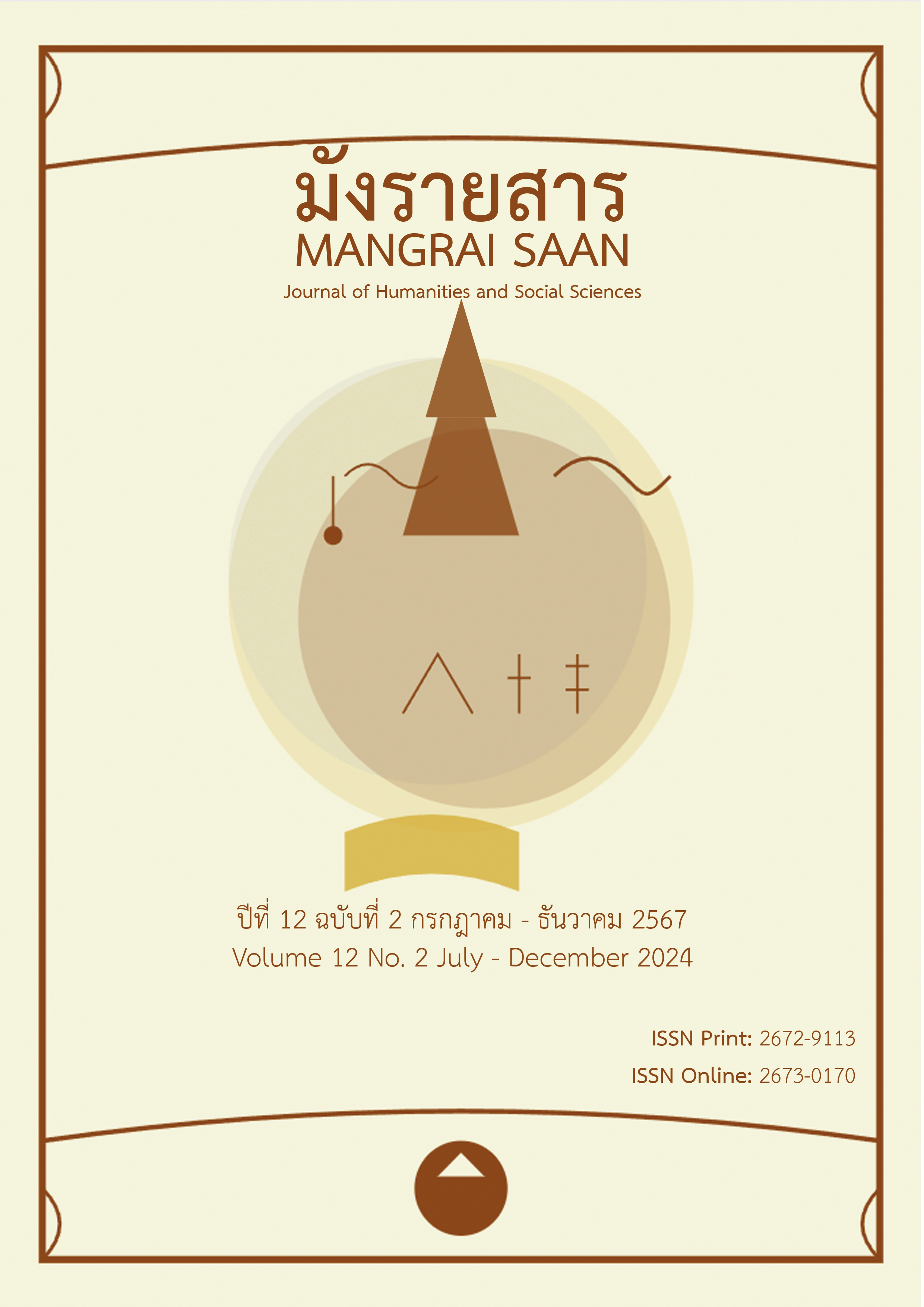A Study of Figurative Language Strategies in President Xi Jinping's Speeches
Main Article Content
Abstract
This research aims to analyze the use of figurative language in President Xi Jinping's speeches by examining 79 translated speeches from significant national and international occasions during 2012-2014, compiled in the Thai-translated book "Xi Jinping's Thoughts and Speeches" published by Sangdao Publishing House in 2015. The study employs qualitative content analysis methodology to identify, analyze, and interpret the patterns and meanings of figurative language used in these speeches.
The findings reveal that President Xi Jinping's speeches utilize four main types of figurative language: 1) Simile, comparing abstract concepts with concrete everyday objects, such as comparing peace to air and sunlight; 2) Metaphor, expressing the power and intensity of change, such as comparing global trends to storms; 3) Personification, attributing human characteristics to abstract concepts, such as portraying war as a demon and nightmare; and 4) Symbolism, explaining national identity and stance, such as using DNA and bloodline as symbols representing Chinese national roots.
The use of these figurative devices reflects effective communication strategies in conveying complex ideas and policies in an accessible manner. They also reveal China's vision and key policies regarding national development, peace maintenance, and international relations. The research findings can be applied to improve political communication, language and communication teaching, and foreign policy analysis.
Article Details

This work is licensed under a Creative Commons Attribution-NonCommercial-NoDerivatives 4.0 International License.
The authors should ensure all the contents and information of the articles published in Mangraisaan. The editors do not share any related responsibility.
References
ชาญวิทย์ ทัดแก้ว. (2565). จีนในยุคสี จิ้นผิง: การเมือง เศรษฐกิจ และการต่างประเทศ. ศูนย์จีนศึกษา สถาบันเอเชียศึกษา จุฬาลงกรณ์มหาวิทยาลัย.
ธัญญา สังขพันธานนท์. (2539). วรรณกรรมวิจารณ์. นาคร.
บุญยงค์ เกศเทศ. (2536). แลลอดวรรณกรรมไทย. โอเดียนสโตร์.
พัชรินทร์ อนันต์ศิริวัฒน์. (2552). ความเปรียบเทียบในวรรณกรรมแปลงพงศาวดารจีน ปริญญานิพนธ์การศึกษาดุษฎีบัณฑิต. มหาวิทยาลัยนเรศวร.
พัชรินทร์ อนันต์ศิริวัฒน์. (2541). วิเคราะห์แนวคิดทางการเมืองในวรรณกรรมไทยตั้งแต่ปี พ.ศ. 2475-2519: รายงานการวิจัย.ภาควิชาภาษา คณะมนุษยศาสตร์และสังคมศาสตร์ มหาวิทยาลัยนเรศวร.
เพ็ญประภา ภัทรานุกรม. (2562). การจัดระเบียบโลกใหม่ (New World Order) กับการปรับตัวทางการศึกษาของประเทศไทย. วารสารร่มพฤกษ์ มหาวิทยาลัยเกริก, 37(2), 59-66.
ศิริลักษณ์ บัตรประโคน. (2548). ทัศนะทางการเมืองและกลวิธีการนำเสนอที่ปรากฏในรวมเรื่องสั้นชุด "หลังอานบุรี" ของวินทร์ เลียววาริณ ปริญญานิพนธ์การศึกษามหาบัณฑิต. มหาวิทยาลัยศรีนครินทรวิโรฒ.
สี จิ้นผิง. (2559). ยุทธศาสตร์การบริหารประเทศ. มติชน.
อดิสรณ์ ประทุมถิ่น. (2563). กลวิธีการนำเสนอเนื้อหาเพื่อสื่อแนวคิดในพุทธธรรมของพระราชพรหมยาน (หลวงพ่อฤๅษีลิงดำ) วัดท่าซุง จังหวัดอุทัยธานี ปริญญานิพนธ์การศึกษาดุษฎีบัณฑิต. มหาวิทยาลัยนเรศวร.
อดิสรณ์ ประทุมถิ่น, พัชรินทร์ อนันต์ศิริวัฒน์, และพรหมพิสิฐ พันธ์จันทร์. (2561). วิเคราะห์การใช้ภาพพจน์เพื่อถ่ายทอด พุทธธรรมคำสอนด้านการเจริญพระกรรมฐานของพระราชพรหมยาน. มังรายสาร, 6(2), 17-26.
อักษรศรี พานิชสาส์น. (2562). The rise of CHINA จีน คิดใหญ่ มองไกล. กรุงเทพฯ: ซีเอ็ดยูเคชั่น.
อักษรศรี พานิชสาส์น. (2566). ครบรอบ 10 ปี BRI: จีนคิดการใหญ่อะไร. 18 ตุลาคม 2566. สำนักข่าวอิศรา. https://www.isranews.org/article/isranews-article/123005-Aksornsri-2.html
Fairclough, N. (1995). Section A: Language, ideology and power. In Critical discourse analysis: The critical study of language (pp. 1-81).

